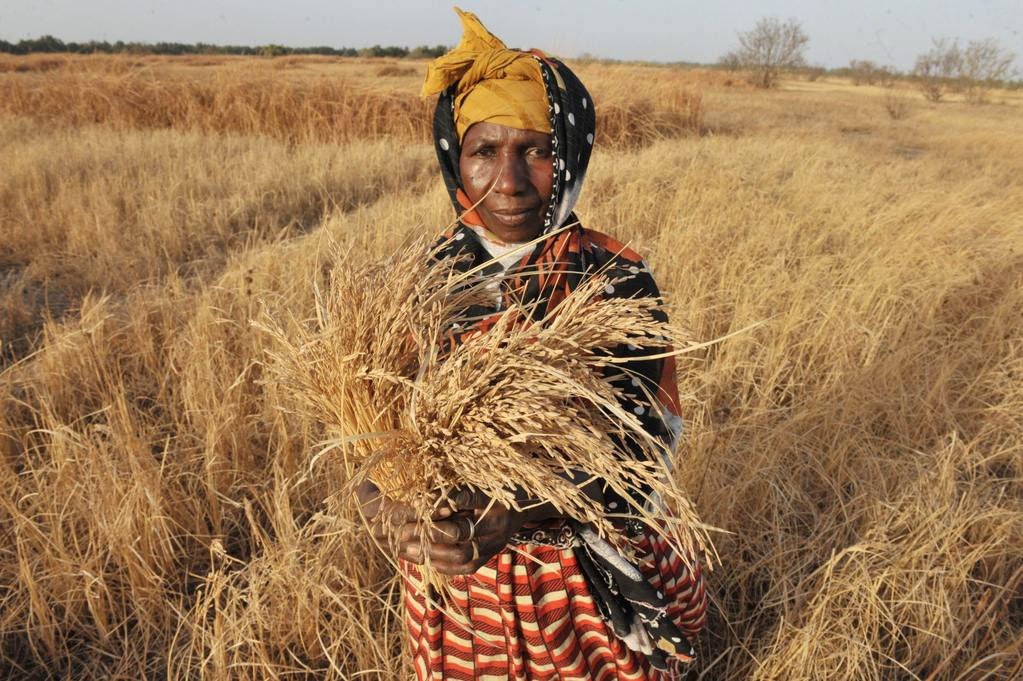(Paris, France) – There are 40,000 delegates at the Le Bourget venue here in Paris for the UN climate talks right now, but none are more desperate for a solid global agreement on climate change than the world’s most vulnerable, the Least Developed Countries (LDCs) group. These are the world’s poorest countries. From small island states in the Pacific to the mountainous, landlocked nations like Bhutan, it’s a diverse group with a shared interest, as the delegate from The Gambia, Environment Minister Pa Ousman Jarju said: “help us survive.”
So what are the LDCs–the 48 poorest countries in the world demanding from the rest of the world at the Paris climate talks?
Here are four of the major issues being raised by the LDC group in the negotiations:
Loss and Damage
Perhaps the most important fight for their lives rests in the inclusion of the concept of ‘loss and damage’ in the final Paris Agreement text. The idea that developed countries should compensate developing countries in some way for the devastation and natural disasters the former’s actions have caused, has been a recurring point of contention in the various draft texts over the years. All developing countries want this provision, but it’s crucial for the most vulnerable to get this assistance, which are the hardest hit by natural disasters.
The LDCs realize actual financial commitments will never be put into any legally binding agreement that would be ratified in places like the U.S. or EU, but having a section on loss and damage included would likely guarantee some forms of compensation going forward.
What worries developed countries the most about this provision is the future– They understand that the effects of natural disasters are already devastating, but if emissions continue to rise the economic impact of having to compensate even just LDCs will rise right alongside.
The exact manifestation of Loss and Damage in the final outcome text is still unpredictable at this point. but as Minister Jarju said yesterday at a press conference, the LDCs see no outcome in Paris without it.
Legally Binding
President Obama said that at least some parts of the Paris Agreement have to be legally binding. But US congress would never ratify a treaty with actual targets outlined in it. So, Obama’s pronouncement is about making the process of reviewing and raising targets binding. In other words, the USA is open to having a portion of the outcome text take the form of a treaty, specifically the idea that countries would be required to return to the negotiating table every few years and potentially ratchet up their commitments.
Though, in an ideal world, Congress would not be such a climate-denying roadblock, LDCs take heart with the fact that at least the U.S., one of the largest carbon emitters in the world, is willing to make the review process something concrete. At the very least, emissions would potentially not run unchecked, causing further climate damage.
1.5 degrees, not 2
This is one of the trickier demands of the LDCs. It’s been widely reported that the 182 domestic climate action plans countries have submitted to the UN climate change body, called INDCs, do not ‘add up’ to keeping global warming to the 2 degrees Celsius.
What Bhutan’s head of climate change, Thinley Namgyel, explains that LDCs actually need global warming to be kept to 1.5 degrees Celsius because of all the damage already done and the technology, funding, and time needed for the LDCs to adapt to the changing climate.
Jarju clearly stated, “there is no way we can accept an agreement that does not take that into account. Why would we risk that safety zone [between 1.5 and 2 degrees Celsius]?”
“If we go beyond 2 degrees, we won’t survive…we know we can’t adapt to what is happening at that point,” said Jarju.
Clear pathway on financing in the future
Though financial commitments will never be made legally binding, the climate finance issue is still the “linchpin” of the Paris Agreement, as Alden Meyer of the Union of Concerned Scientists put it.
There are two levels to the financial demands of LDCs. First, they need more commitments to the LDC Fund, a pot of money specifically set aside by one of the major funding mechanisms under various development banks and announcements like the $30 million pledged by the U.S. for climate risk insurance.
The Paris redline is really though one of trust, LDCs need a clear pathway of future financing from any financial commitments made. In the Copenhagen agreement in 2009, countries agreed upon goal of spending $100 in climate related finance for the developing world by 2020. LDCs want to know that a $100-billion-a-year goal will be met too and that a portion of it will be allocated to them.
The climate wasn’t destroyed overnight and neither will adapting to and mitigating further destruction.
It’s always a sobering moment amid the hustle, bustle, drama, and inane arguments in the negotiating rooms when you think about how climate change could literally wipe out entire nations like the Seychelles. If you think these talks are just about money and politics – and they mostly are – just listen to Jarju who says “we’ve been waiting too long” to give the outcome a renewed urgency and importance.
